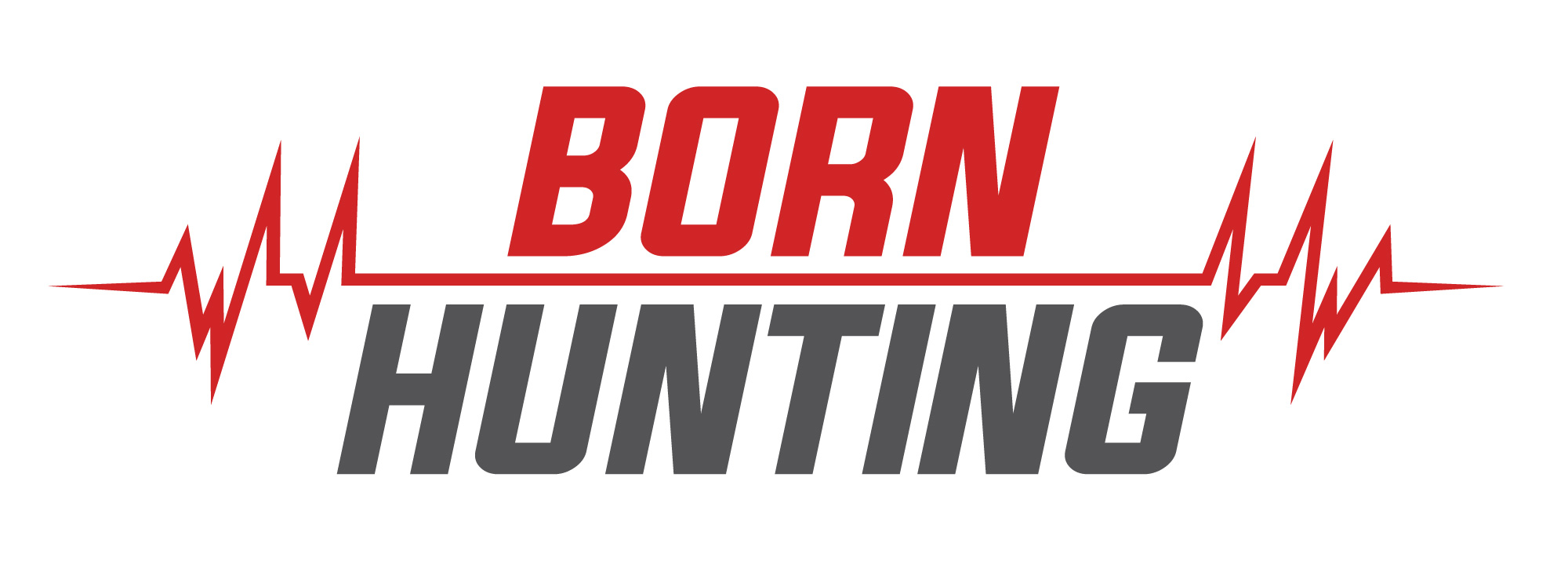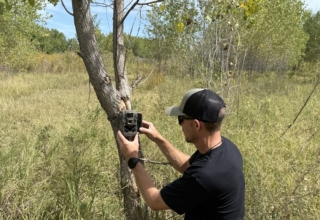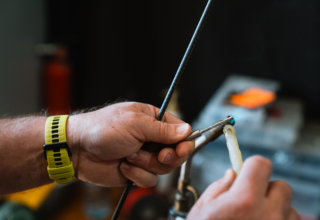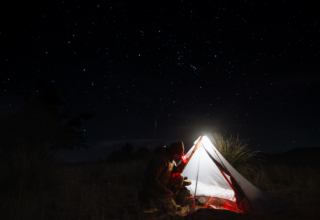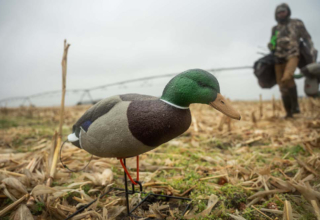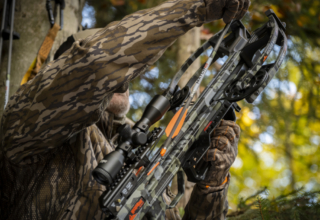There is a lot of steam behind using heavy arrows for bowhunting, but they may be doing you less favors than you think.
by Josh Kirchner
It’s no secret that heavy arrows have stolen the limelight in recent years. Heavy arrows seem to be the heavy hitters, whether via podcasts, YouTube videos, or even articles like this one. Bowhunters are talking about arrow weight—a lot— and then acting upon it.
There are several reasons bowhunters might choose to go with a heavier arrow. Maybe it’s creating a quieter setup, an insurance policy for hitting a shoulder blade or valuing penetration over all else. Whatever the case, an interesting note is that many of these folks seem to drift back away from heavy arrows in the end. I’ve seen it time and time again. And that is why I want to explore the “why” behind the heavy arrow decision.
Regardless of this article’s aggressive title, I’m not looking to bash heavy arrows. I’m encouraging others to base their arrow-building decisions on their opinion, experience, and hunting style rather than blindly following an illusive light. In light of that, let’s consider a few things before you tip the scales northward with your arrows.
A Steep Trajectory Means Less Room For Error
A heavier arrow means a steeper trajectory, plain and simple. This is due to the arrow being slower in the air and having both a larger drop and a quicker drop than a lighter arrow would. The result is a larger arc in flight. There are a few downsides to this. One of them is that you’ve got less room for error on your shots, particularly with your elevation. Should you not have an exact range, it could spell disaster, especially in the field. You don’t always have the time to range in the bowhunting woods. Even being off a yard or two with a heavy arrow can result in a bad hit.

Something else to note about a steeper trajectory and slower arrow is you’ll have larger pin gaps if using a multi-pin bow sight. This makes the practice of pin gapping (aiming in between pins) more challenging to achieve consistent and precise accuracy. If you add that to potentially not having an exact range, that’s another problem.
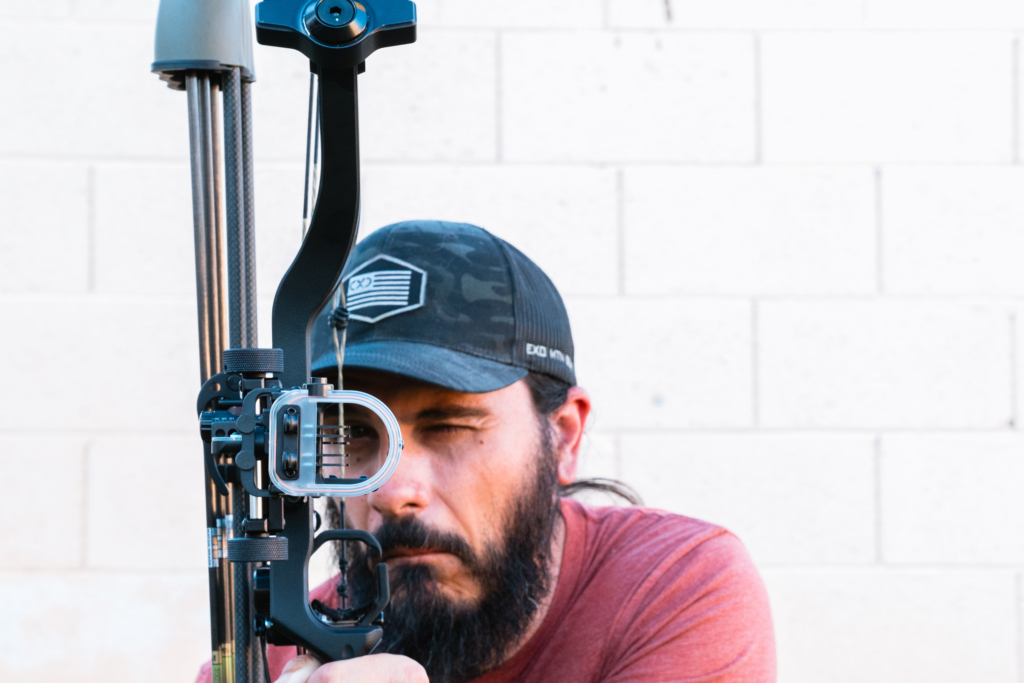
I also believe there is something around building confidence ahead of the season by shooting long-range. Practicing at 100-plus yards makes 50 yards seem like a chip shot. And if you’re grouping arrows at those far distances, your confidence will skyrocket regarding accuracy walking into the field. My experience with heavy arrows at long range is mostly negative because of what I’ve mentioned. It even made me question my ability. Once I went to a lighter setup like I was used to, my groups tightened immensely at a distance.
Are Heavy Arrows More Forgiving?
Another argument I’ve heard favoring heavy arrows is that they are more forgiving. I think this comes down to your definition of forgiving and the factors that are most important to you. A heavy arrow is more likely to go completely through a shoulder blade if you accidentally hit it. And they will also hold their own a bit more when bucking the wind. In those senses, they are forgiving. They aren’t huge factors to me, and I consider other factors much more important in the camp of forgiving.
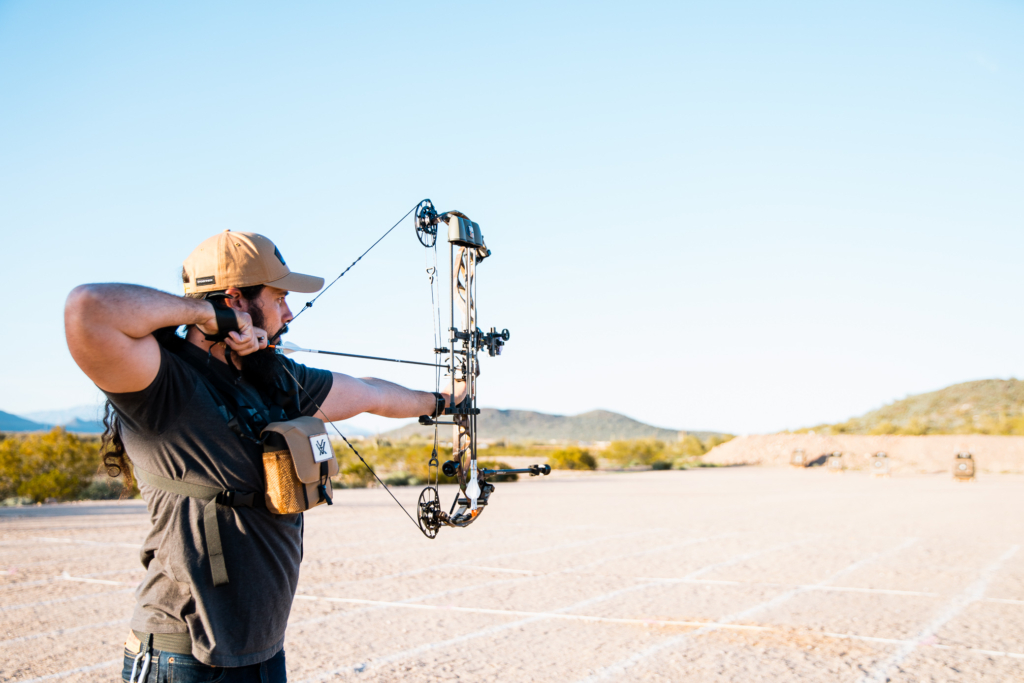
Accuracy is the most important thing in my eyes, no matter what. The more accuracy there is, the more “what ifs” fly out the window and lose their relevance. So, the most forgiving setup from where I stand is the one that will allow you to be the most accurate. And that really all comes down to having a flatter trajectory. If you have to estimate yardage, have a small window to shoot through, or maybe your arm even drops or raises a tad, your chances of staying in the vitals are much higher with a lighter to mid-weight arrow.

You Shouldn’t Be Aiming For The Shoulder Blade
A common reason for bowhunters jumping to a heavy arrow is that they want to be able to go through a shoulder blade and are afraid of potentially doing so with a lighter arrow. I drank this Kool-Aid for a bit, and a question popped up in my mind. “Why are we planning to make a bad shot rather than a good one?”
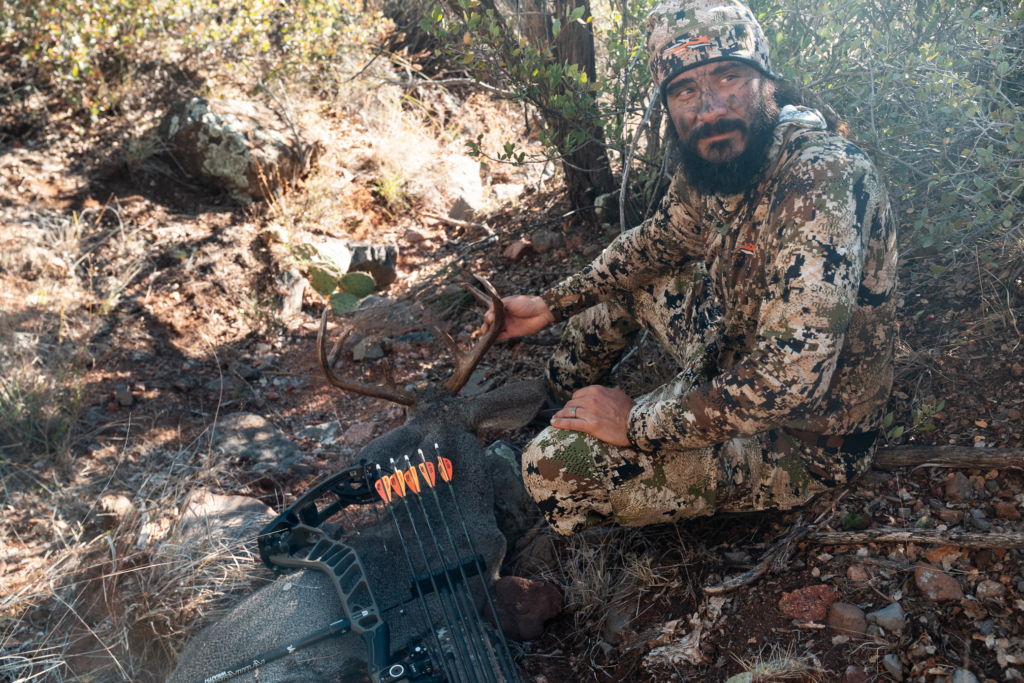
The fact is, we shouldn’t be aiming for the shoulder blade in the first place. If you’re doing so, you’re not only flirting with heartache, but you’re also giving yourself much less room for error on the animal. It is our job as hunters to deliver the quickest and cleanest death possible. And in the heat of the moment, when things can be quite tense, I think it’s smart to try and harness as much forgiveness as possible so we can succeed. The lungs take up a much larger area than the shoulder blade does. You’ve got more room up, down, left, and right by aiming at the center of the lungs. Give yourself some room to breathe.
I’d also like to point out that, based on what we’ve already discussed with the slower arrow and steeper trajectory, you are decreasing your forgiveness of precision, which increases the likelihood of potentially hitting the shoulder and making a bad shot.
Your Hunting Style Matters
When teetering with toting some heavy arrows around, consider your hunting style. Based on what I’ve already said, if you’re really only planning on sitting in a treestand/blind and taking 20- to 30-yard shots, then the potential downfalls of a heavy arrow aren’t nearly as potent. This is also true for elk hunters sticking to dark timber in close quarters. Go nuts.

However, if it’s the spot-and-stalk life for you, you will see/experience more of a difference, some of which may be negative. Because spot-and-stalk hunters are generally taking longer shots in a less controlled environment like a blind or stand, the downsides I’ve mentioned will be magnified. I’ve experienced them all and have had countless other successful spot-and-stalk bowhunters tell me the same. Having to compensate for a few yards on the spot at 20 yards is different than 50 yards with less room for error.
Not All Setups Are Created Equal – Shoot for Speed, Not Weight … Kinda
What is a heavy arrow for one person might not necessarily be for another. This means that one person might experience more negative feelings than another. And this all comes down to one’s setup. Somebody with a 30-inch draw pulling 80 pounds shooting a 550-grain arrow will not experience the same downfalls as someone who is a 28-inch draw pulling 60 pounds shooting a 550-grain arrow will. The person with the longer draw pulling heavier weight will naturally have more arrow speed to push that 550-grain arrow on a flatter trajectory. The solution here is to try and shoot for a window of arrow speed, not arrow weight. Having a moderate speed of 280-290 fps will keep your pin gapping in check as well as your trajectory. That might mean a 550-grain arrow for one person and a 430-grain arrow for another. So, not all heavy arrows are created equal from setup to setup. You need to find the sweet spot for you.
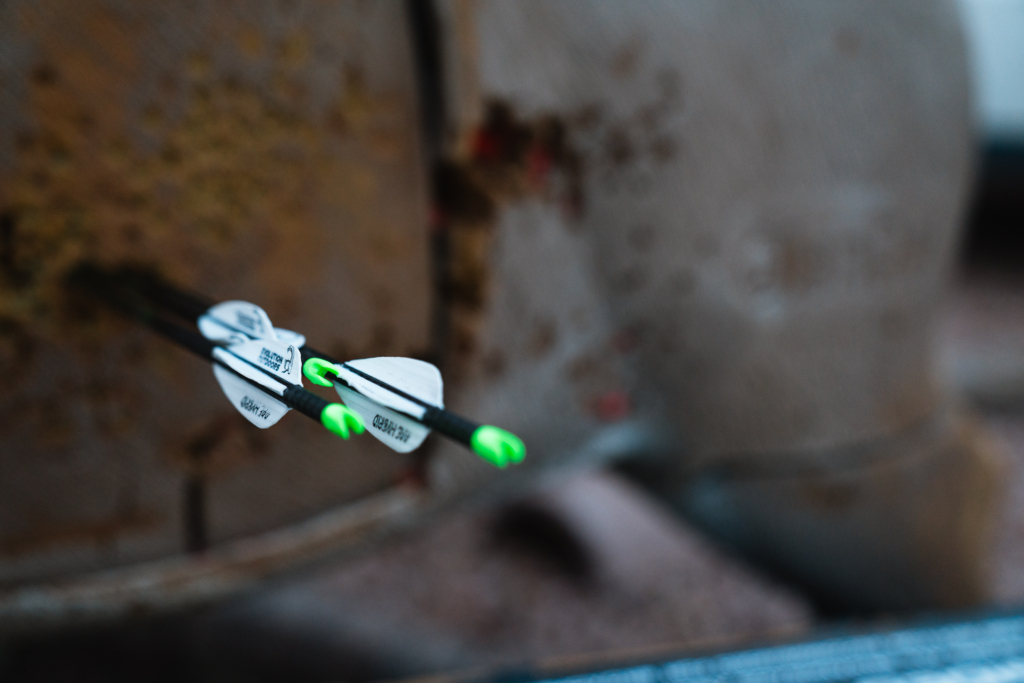
Closing
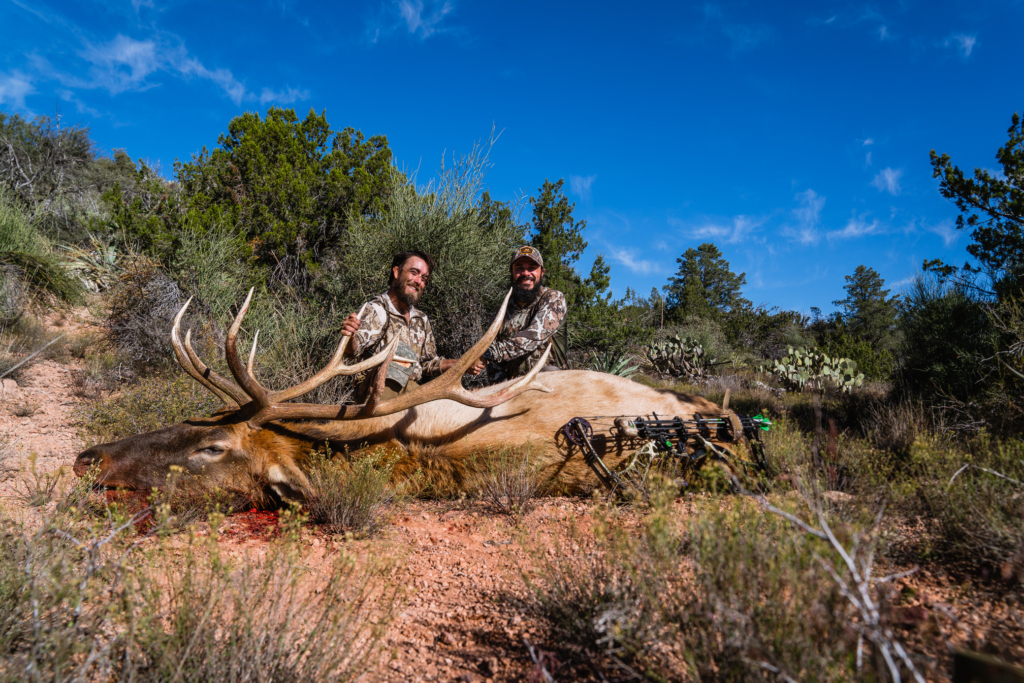
Years back, I joined my best friend on an archery elk hunt in Arizona and watched him arrow a great 6-point bull. His arrow setup goes against many of the standards put in place today. He shot a 360-ish grain arrow and a mechanical broadhead pulling 65 pounds. The arrow zipped through the bull, but we never found it. He uses this setup because he has the most confidence in it, and it works for him. He’s accurate with it. This article is not solely based on his hunt, but many hunts. All of that to say, heavy arrow, middle of the road, or light, you should do the same. I, or nobody else, can’t tell you what you will have the most confidence in. Only you can do that.
